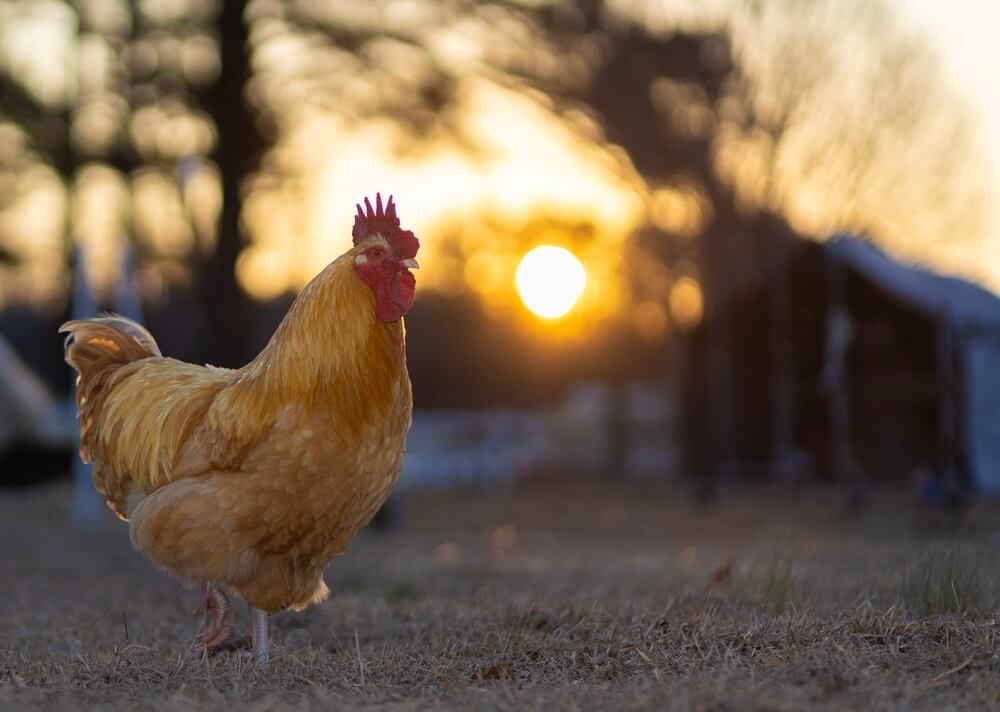The Ultimate Buff Orpington Chicken Breed Guide – England’s Golden Gift To Chicken Keepers!
Welcome! This article contains affiliate links, meaning I get a commission if you decide to make a purchase through my links, at no extra cost to you.
Say hello to the legendary diplomat of backyard chicken flocks. The Buff Orpington chicken! These sunset-colored birds turn heads with their gorgeous, elegant, golden plumage, yummy eggs, and adorable, teddy-bear-like personalities. But be warned. These gentle giants will strut through your yard like feathered royalty and steal your heart faster than they’ll devour your chicken treats!
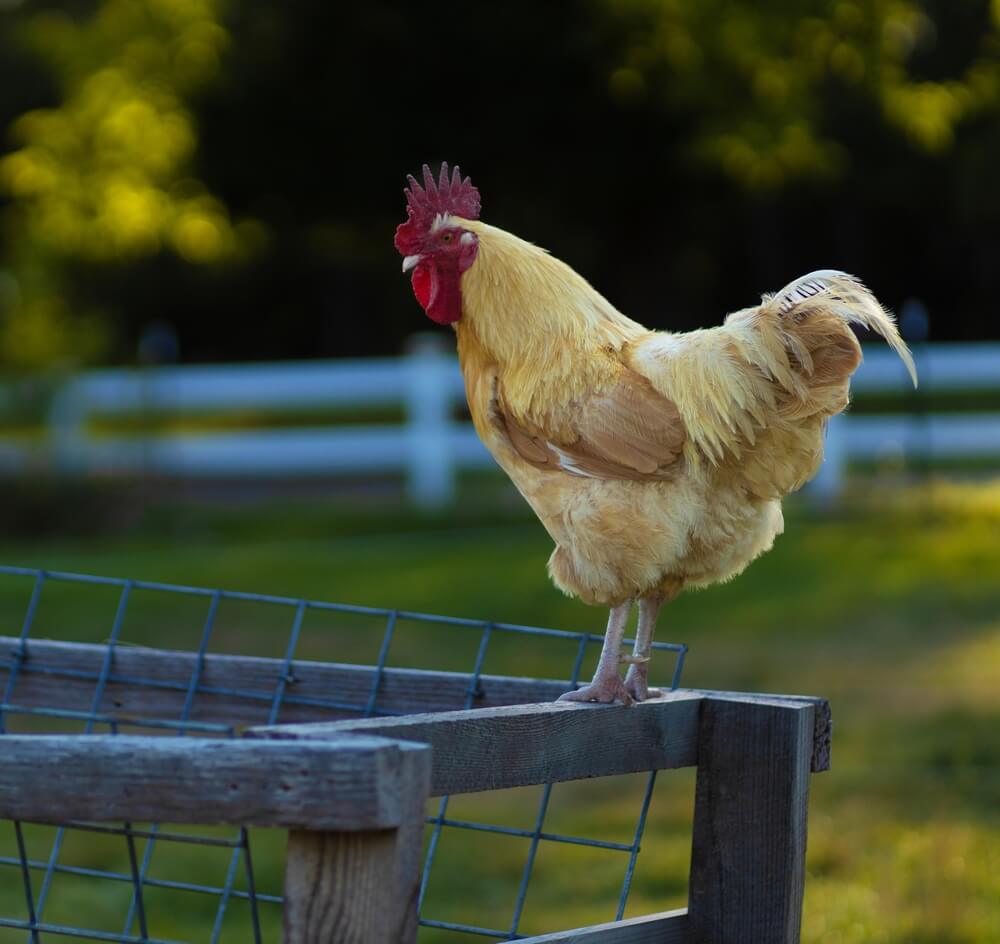
Let’s explore these legendary layers in more detail.
Shall we?
Buff Orpington Chicken Breed Overview

The Buff Orpington stands as poultry royalty! This golden-feathered giant conquered Victorian England before going on to take the world by storm. Born from the ambitious breeding programs of William Cook in the 1880s in Kent, these gentle giants transformed from show ring darlings into beloved backyard companions.
| Origin: | Kent, England (1880s, developed by William Cook). |
| Lifespan: | 6 to 8 years. |
| Cost: | $3 to $8 for chicks, $15 to $35 for pullets/hens. |
| Rooster Weight: | 8 to 10 pounds. |
| Hen Weight: | 6 to 8 pounds. |
| Temperament: | Calm, docile, friendly, excellent with children. |
| Appearance: | Large, fluffy golden-buff plumage, broad body, single red comb, orange eyes. |
| Uses: | Dual-purpose (meat and eggs), exhibition, and backyard pets. |
| Egg color: | Light brown to pinkish-brown. |
| Egg production: | 180 to 200 eggs per year. |
| APA Approved: | Yes (admitted to American Standard of Perfection in 1894). |
The table above will help you learn more about the Buff Orpington chicken breed.
But, there’s also tons more to discover!
Read More – 18 Friendly Chicken Breeds That Work For Mixed Flocks | No More Chicken Coop Drama!
Origin And History
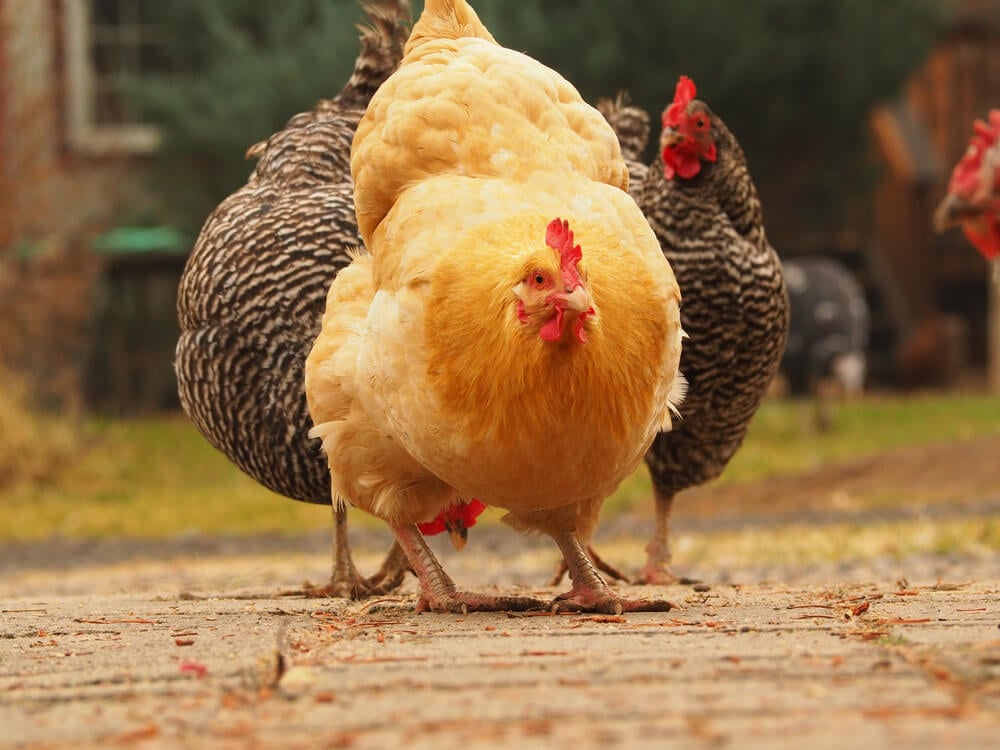
William Cook had a vision in 1886. He wanted to create the perfect chicken for English backyards. Working from his farm in Orpington, Kent, Cook crossed Minorcas, Langshans, and Plymouth Rocks to build his dream bird.
The result was a fluffy powerhouse that could lay eggs like a champion and put delicious meat on the dinner table.
Cook didn’t stop at one color. He developed Black Orpingtons first, then added White and Buff varieties to his collection. The Buff quickly became the star of the show. Their warm, golden feathers caught everyone’s eye at poultry exhibitions across England.
By the early 1890s, the breed crossed the Atlantic to the US. Shortly after, the Buff Orpington received official recognition by the American Poultry Association in 1902. The timing was perfect. Victorian families sought chickens that not only looked good in their yards but also performed well in their coops. The Buff Orpington delivered.
Cook’s marketing genius also contributed to the success. He promoted his birds as dual-purpose champions that could do it all. No need to choose between egg layers and meat birds when you could have both in one gorgeous package. The breed spread like wildfire through Europe and North America.
Today’s Buff Orpingtons still carry Cook’s original vision. They remain one of the most popular heritage breeds worldwide, beloved by everyone from urban families to serious homesteaders.
What Are Buff Orpington Chickens Used For?
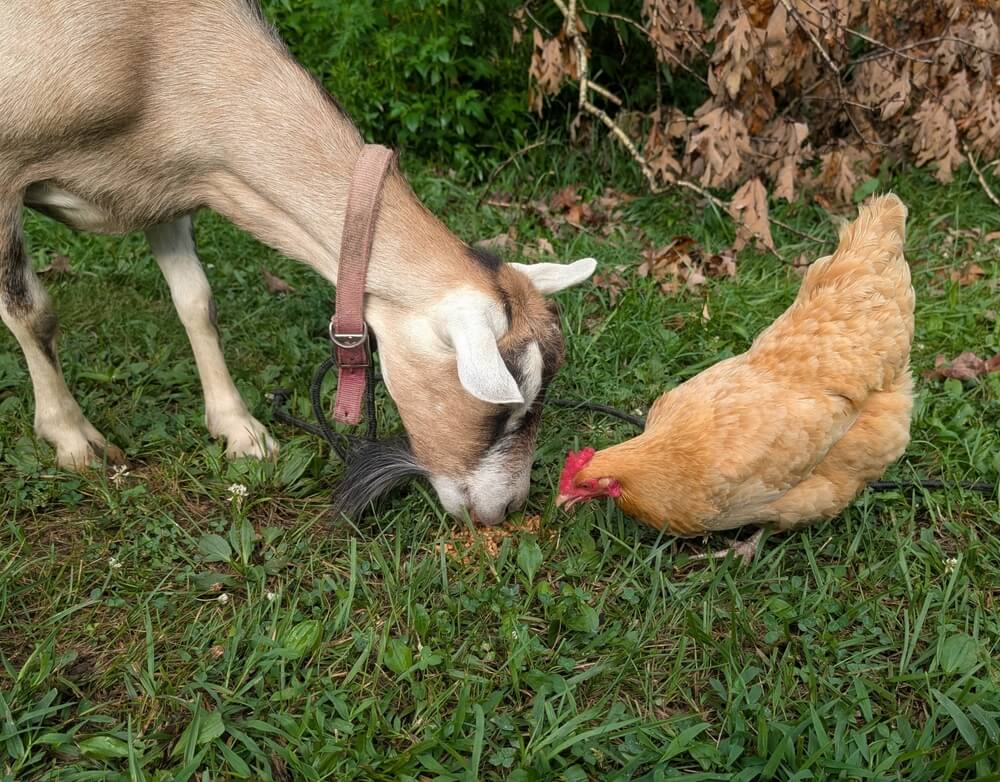
Buff Orpingtons win hearts with their triple-threat combo. These birds lay delicious, creamy eggs that bakers and chefs adore. Their rich yolks make everything from scrambled eggs to homemade pasta taste better.
Additionally, they’re consistent and reliable layers, providing you with fresh breakfast ingredients for most of the year.
Their personalities are the deciding factor for most chicken keepers. Buff Orpingtons act like feathered diplomats in mixed flocks. They rarely pick fights and often act as peacekeepers when other breeds become snippy.
Kids also love Buff Orpingtons because they’re gentle enough to be petted and held. Many families choose them as their first chickens for precisely this reason.
These birds serve as excellent meat producers, though many backyard keepers get too attached to eat them. Their large, meaty frames made them popular dinner table birds in their heyday.
But Buff Orpingtons come with some trade-offs. They struggle in blazing summer heat more than Mediterranean breeds like Leghorns, which are naturally heat-tolerant. Their thick feathers, which look so gorgeous, become a burden when temperatures soar above 85 degrees. They mature more slowly than commercial hybrids and many Mediterranean breeds, too, taking 5 to 6 months to start laying, compared to Leghorns, which begin laying at 4 to 5 months.
Space is another consideration. These chunky birds need more room than compact breeds. A Leghorn might thrive in 2 to 3 square feet of coop space, but Buff Orpingtons want 4 square feet minimum. Rhode Island Reds and Australorps fall somewhere in between. Your chicken coop budget goes further with smaller breeds, but you miss out on the Orpington charm.
Read More – 21 Best Garden Crops To Grow As Chicken Food! Perfect For Hungry Chickens!
Health And Lifespan
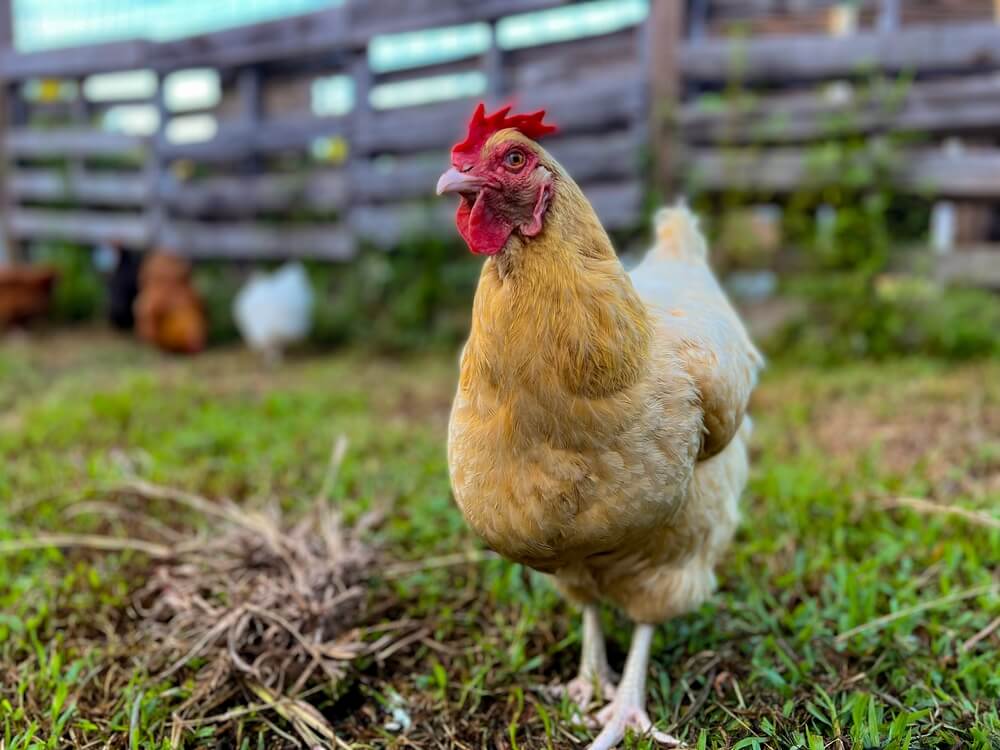
Buff Orpingtons typically live 6 to 8 years with proper care, though some pampered birds reach 10 years. They’re generally hardy chickens but face a few breed-specific challenges. Their fluffy feathers can harbor mites and lice more easily than tight-feathered breeds, so regular dust baths and coop cleaning become essential.
Buffs are prone to obesity due to their calm nature and affinity for food. Overweight hens lay fewer eggs and face more health problems. Their heavy bodies also make them susceptible to bumblefoot, a bacterial infection that affects their feet. Check their foot pads regularly for swelling or black scabs.
Broodiness can become excessive in some Buff Orpington hens. While this makes them excellent mothers, persistently broody birds stop laying and can lose dangerous amounts of weight. You’ll need to break broody behavior if you want consistent egg production.
Their thick feathers make heat stress a genuine concern. Watch for panting, wing spreading, and lethargy during the summer months. Provide plenty of shade, cool water, and good airflow to help prevent heat exhaustion or heat stroke.
Read More – Ten Things All Homesteaders Must Know Before Buying, Raising, Or Getting Chickens!
Food And Water

Adult Buff Orpingtons consume approximately 1/4 to 1/3 pound of chicken feed daily, which is slightly more than smaller breeds. Use a high-quality layer feed with 16-18% protein for laying hens. Growing chicks need starter feed with 20 to 24% protein for their first 8 weeks.
These chickens go crazy for kitchen scraps. They demolish watermelon rinds, corn cobs, and leafy greens like lettuce and kale. Cracked corn, cooked rice, and oatmeal make them practically dance with excitement. They also enjoy protein-rich treats such as mealworms, crickets, and earthworms.
Provide constant access to clean, fresh water. A single hen drinks about a pint daily, more in hot weather or when laying. Use waterers that prevent contamination from droppings and bedding.
Buff Orpingtons don’t require special diets beyond quality layer feed, but their tendency toward obesity means monitoring treat portions carefully. Don’t let their cute personas trick you into excess goodies. Limit treats to 10% of your Buff’s total diet!
Appearance And Colors
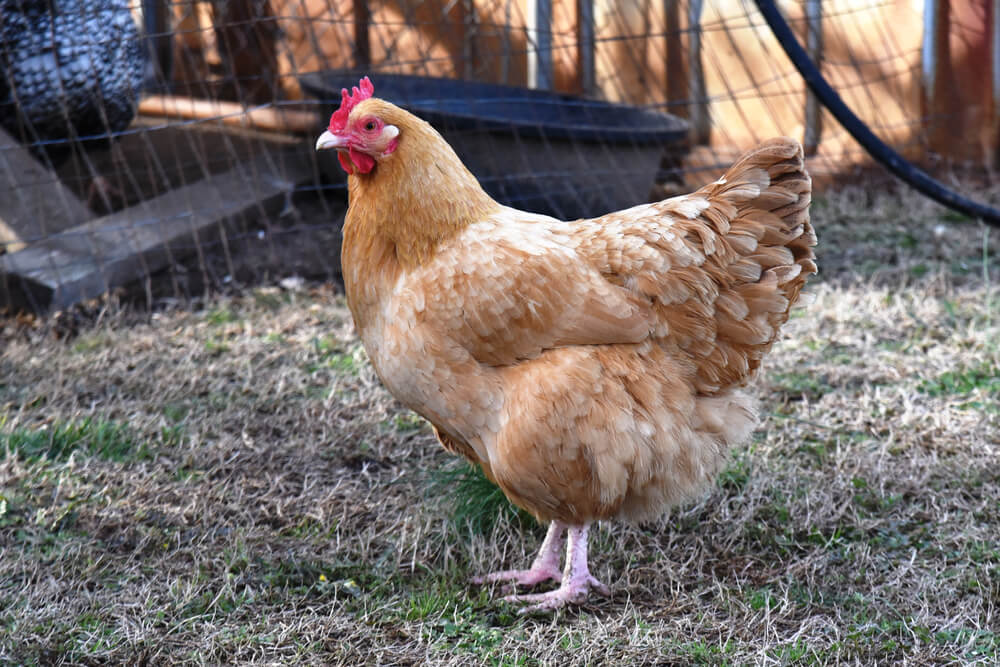
Buff Orpingtons are living golden clouds on legs. Their signature buff color ranges from pale cream to rich golden wheat, with each feather showing subtle variations that create depth and richness. The ideal bird displays even coloring throughout, though slight variations between sections are normal.
These chickens are built like feathered linebackers. They have broad, deep bodies with full, rounded breasts and wide backs. Their fluffy plumage makes them appear even larger than their actual 6 to 10-pound frames. The abundance of soft, loose feathers gives them an almost spherical silhouette.
Their heads feature bright red single combs with five distinct points, matching red wattles, and striking orange to reddish-bay eyes. The beak is short and sturdy, colored yellow to brownish (horn). Their legs are clean, sturdy, and yellow to pinkish-yellow, with four toes on each foot.
Roosters display more prominent combs and wattles, longer neck hackles, and flowing sickle feathers in their tails. They carry themselves more upright than the hens. Hens have smaller combs that may flop slightly to one side and more compact, rounded tail feathers.
All Buff Orpingtons share exceptionally dense, fluffy plumage that might give the illusion of fullness down to their hocks. However, their legs remain clean of feathers!
Read More – How To Keep Hungry Foxes Away From Your Backyard Chickens And Coop!
Our Ballad To The Buff Orpington Chicken Breed

In Orpington’s fertile farming ground, these golden chickens can be found. With feathers soft as butter’s gleam, they waddle like a golden dream.
Like fluffy clouds, they grace the yard, their gentle nature never marred. Not just for eggs or meaty fare, but friends whose presence shows such care.
Behold! Their buff coat looks warm and grand, from Cook’s own vision and skilled hand. Their plumage rich with sunset’s glow, reveals a breed that steals the show.
This peaceful flock rules hearts with ease when morning breaks through orchard trees. Their steady cluck and amber eyes, bring keepers both love and surprise.
Their fluffy nature can’t be beat, though they struggle in the summer heat. Indeed – these feathered friends, so mellow and bold, are worth much more than the finest gold.
Read More – Our Ten Best Tips For Raising Healthy, Happy, Productive Chickens!
Conclusion
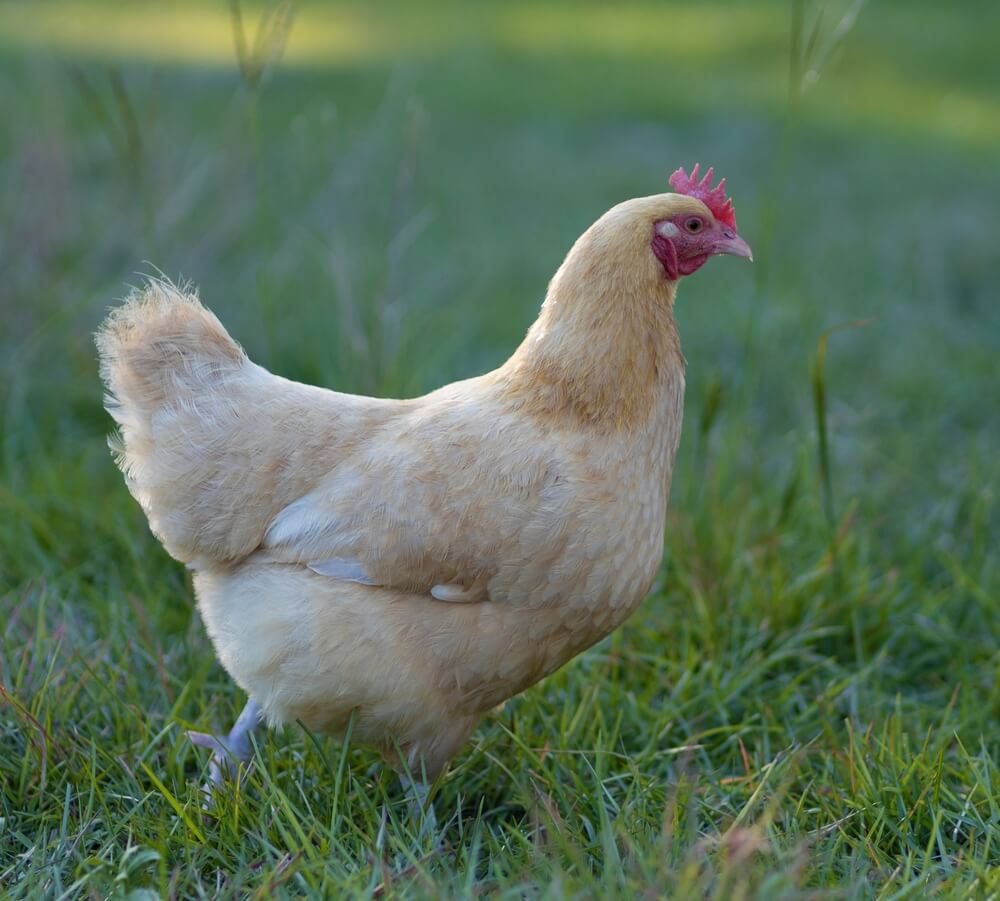
Buff Orpingtons have perfected the art of being irresistible. They’re living proof that the best things in life come with feathers, gentle hearts, and the power to turn any backyard into a pastoral paradise. Once you go Buff, you’ll wonder how you ever lived without these golden ambassadors of the chicken world.
What about you?
- Have you ever seen a Buff Orpington chicken in real life?
- Will you add some Buffs to your flock this year?
- Will you also add other chicken breeds? Perhaps some fancier ones, such as Silkies or Polish chicken?
Thanks for reading.
Have a great day!

